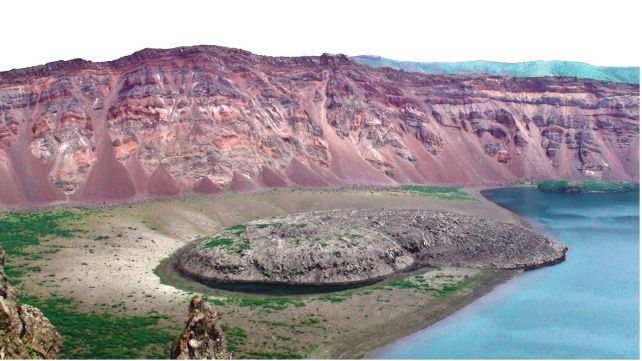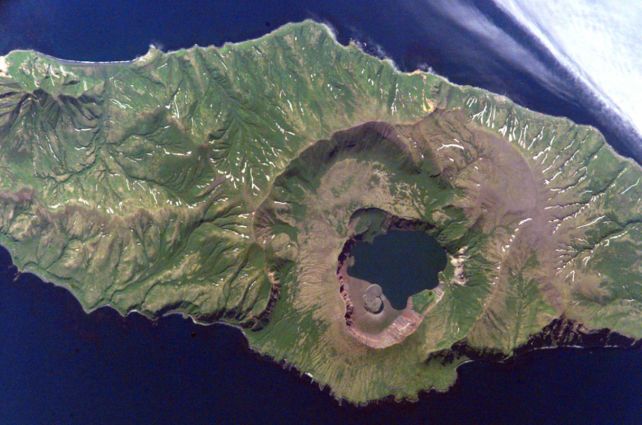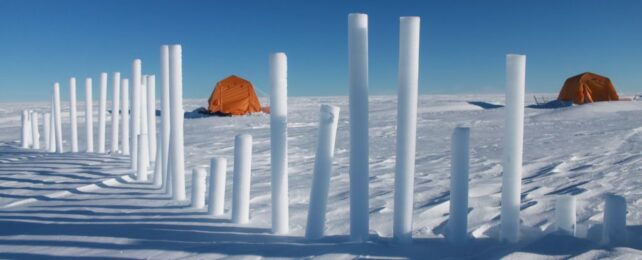In 1831, somewhere on Earth's surface, a portal to the underworld appeared.
A massive volcano opened wide its jaws and belched forth so much ash and smoke that the skies dimmed, cooling the Northern Hemisphere.
Crops failed. People starved. Yet for all the devastation, the volcano's location remained a mystery.
Now, through the careful analysis of ash from the eruption that had been trapped and preserved in the Greenland ice sheet, a team led by volcanologist William Hutchison of the University of St Andrews in the UK has found the culprit.
The world-changing event has at last been linked with the Zavaritskii volcano on Simushir of the Kuril Islands, an uninhibited strip of land barely 59 kilometers (37 miles) in length located between Russia and Japan.
Hutchison and his colleagues compared the chemistry of microscopic shards of ash extracted from Greenland ice cores with samples from the Zavaritskii caldera, and found a perfect match.

"Finding the match took a long time and required extensive collaboration with colleagues from Japan and Russia, who sent us samples collected from these remote volcanoes decades ago," Hutchison says.
"The moment in the lab when we analyzed the two ashes together, one from the volcano and one from the ice core, was a genuine eureka moment. I couldn't believe the numbers were identical. After this, I spent a lot of time delving into the age and size of the eruption in Kuril records to truly convince myself that the match was real."
Today in the 21st century, humanity has access to a suite of tools that allows us to identify the sites of geological activity, from global seismic monitoring stations, to a swarm of Earth-monitoring satellites in low orbit. Back in 1831, nearly 200 years ago, these tools didn't exist; so a volcanic eruption on a remote, uninhabited island could easily evade identification.
One eruption thought to be responsible for the global cooling event from 1831 to 1833 was attributed to Babuyan Claro in the Philippines.
This, a 2018 paper discovered, never actually happened.
Another theory, based on the sulfur belched during the eruption, suggested that the volcano may have been on Graham Island, a disappearing-reappearing volcanic mass in the Strait of Sicily. Hutchison and his colleagues found that the sulfur in the ice cores confirmed an 1831 eruption in the Northern Hemisphere, but did not match this location.
Instead, their work found evidence of what is known as a Plinian eruption, one that is similar to the eruption of Vesuvius. A closer examination of microscopic volcanic glass shards recovered from the Greenland ice showed an exact match to samples from Simushir.

And we have a crater to prove it. Today, Zavaritskii is dominated by a caldera – the hollow basin that remains when a volcano explodes. This caldera likely formed during that 1831 eruption, the researchers say.
The team's estimates for the volume of volcanic matter spewed forth from Earth's guts would cause cooling of around 1 degree Celsius – comparable to the 1991 eruption of Mount Pinatubo in the Philippines.
Volcanoes on Earth often continue to remain active for eons; and one that catastrophically erupts once can do so again. The team's findings suggest that remote volcanoes need to be studied and monitored more closely.
"There are so many volcanoes like this, which highlights how difficult it will be to predict when or where the next large-magnitude eruption might occur," Hutchison says.
"As scientists and as a society, we need to consider how to coordinate an international response when the next large eruption, like the one in 1831, happens."
The research has been published in the Proceedings of the National Academy of Sciences.
